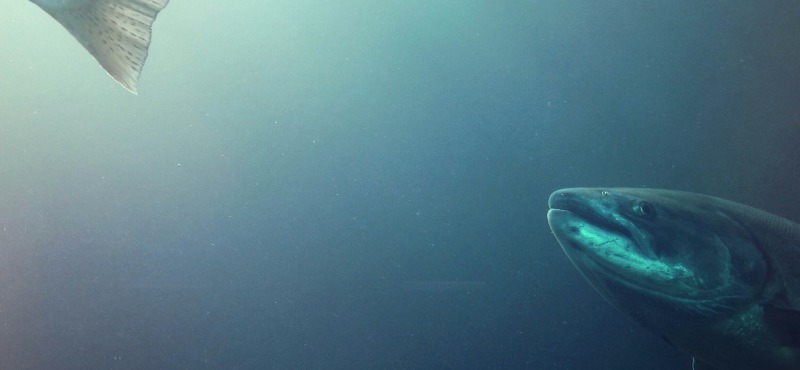The Ninth Circuit Court of Appeals recently affirmed an injunction issued by the District Court for Western District of Washington as part of the U.S. v. Washington litigation ordering the State of Washington to repair and replace culverts blocking salmon runs and habitat. (1) This decision breaks new ground and arguably has broader implications than decades of prior decisions which have reached the U.S. Supreme Court many times. That is because prior decisions were limited to either allocation of a particular fishery between tribal and non-tribal fishers or involved in-water construction that prevented access for treaty fishing. The current decision mandates changes in the built environment to promote conditions that will support salmon recovery. While the “Culvert Decision” applies to fixing culverts owned by Washington State, it could have broad implications for other government and private entities that own, manage, and/or control structures, including tide gates, floodgates, and dams, which block or diminish salmon runs in Washington.
Background
The Culvert Decision is the most recent decision in a line of cases interpreting and defining the treaty-protected fishing rights of Northwest Indian tribes, known as United States v. Washington, which have been ongoing since the early 1970s. In 2001, 21 tribes brought a new sub-proceeding alleging state culverts blocking salmon from passing through en route to and from their spawning grounds infringe upon the tribes’ treaty-protected fishing rights. The Culvert Decision is the successor to a 1985 decision by the Ninth Circuit refusing to interpret the tribes’ treaty fishing rights as imposing a broad environmental servitude. In that case, the district court ordered the State to refrain from degrading the environment in ways that could deprive the tribes of their treaty-protected fish allocation. (2) The Ninth Circuit reversed, holding it would only evaluate the tribes’ claim of a right to protection of fish habitat if presented with concrete facts underlying a particular dispute. (3)
Other United States v. Washington decisions create bright line rules for determining liability. For example, the physical invasion of treaty-protected fishing areas violates treaty rights and, to ensure a moderate living, tribes have a right to 50 percent of the annual catch in western Washington. (4) The Culvert Decision, on the other hand, is equitable in nature, and it remains to be seen how the case will translate into a liability standard that could be used to resolve other cases involving environmental degradation and treaty-fishing rights.
What the Culvert Decision Says
The Ninth Circuit affirmed the district court’s injunction requiring the State to repair and replace culverts prohibiting free passage of fish to treaty-protected fishing areas. The Court interpreted the tribes’ treaty right to a moderate living to include protection of fishery habitat from man-made degradation. (5) It found that such degradation includes culverts which block free passage of salmon. The Court agreed with the district court’s finding of a significant decrease in salmon stocks in the state since 1985, and emphasized evidence indicating barrier culverts block hundreds of thousands of salmon from reaching their spawning grounds. (6)
Meaning and Implications of the Culvert Decision
What the Culvert Decision seems to make clear is that the right of a treaty tribe to earn a moderate living includes the concomitant right to a sufficient number of fish to provide and sustain that living. The right extends to the protection of fish habitat from human-caused environmental degradation and mandates the correction of conditions negatively impacting fish to promote habitat health and fish abundance. When a dispute over man-made environmental degradation of fish habitat arises in a particularized context, the courts will likely examine the dispute consistent with the Culvert Decision.
“This decision breaks new ground and arguably has broader implications than decades of prior decisions which have reached the U.S. Supreme Court many times.”
The Decision and the district court injunction it upholds, however, leave many questions regarding its prospective application unanswered. The Court did not enunciate a clear standard for determining whether particular conduct amounts to a violation of treaty-protected fishing rights. For instance, the Ninth Circuit relied on the district court’s finding that barrier culverts are directly responsible for a portion of salmon habitat degradation causing declines in salmon runs (7), but the Court did not explain how much degradation a tribe would need to show or delineate a set of facts a tribe must prove to obtain an injunction like the one issued in this case. The Court also failed to identify or describe what other factors or infrastructure, if any, could contribute to diminished salmon runs.
As such, the Culvert Decision may have broader ramifications. It potentially implicates tide gates, floodgates, dams, and stream-flow or river temperature changes caused by or attributable to state, local government, or private-party actions. It could impact the development of habitat for a number of purposes, including housing, recreational, and industrial projects. In short, the ruling’s ultimate impacts are yet to be determined, and could be numerous and far-reaching.
__________________
1 United States v. Washington, No. 13-35274, slip op. at 7 (9th Cir. June 27, 2016).
2 United States v. Washington, 759 F.2d 1353 (9th Cir. 1985) (en banc).
3 Id. at 1357.
4 United States v. Washington, 384 F. Supp. 312, 343 (W.D. Wash. 1974).
5 Id. at 31–33.
6 United States v. Washington, No. 13-35274, slip op. at 45 (9th Cir. June 27, 2016).
7 Id. at 51.

























